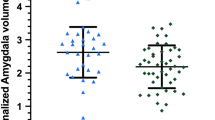Summary
A clinical follow-up covering a period of 5–10 years after onset was performed in 150 patients with optic neuritis or other potential onset symptoms of MS. Thin-layer isoelectric focusing had been used for the initial CSF-protein analysis. No evidence for a more probable alternative diagnosis appeared in 147 patients while a non-MS diagnosis was established in 3 patients. Among these 147 subjects the planned follow-up was accomplished in 131 patients, but not in 16. An evolution into clinically definite MS occurred in 59 subjects, in whom oligoclonal CSF immunoglobulin was found in 92%. Further clinical activity without spatial dissemination—i.e. lesser degrees of diagnostic probability for MS—were found in 35 patients in whom oligoclonal CSF immunoglobulin components were detected in 86%. Among the 131 patients with a complete follow-up, 45 remained free from further clinical activity; oligoclonal CSF immunoglobulin components occurred in 40% of these patients. The frequency of further clinical activity with or without spatial dissemination was significantly higher in subjects exhibiting oligoclonal CSF immunoglobulin components than in those without such changes.
Similar content being viewed by others
References
Broman T, Andersen O, Bergmann L (1981) Clinical studies on multiple sclerosis. Presentation of an incidence material from Gothenburg. Acta Neurol Scand 63:6–33
Confavreux C, Aimard G, Devic M (1980) Course and prognosis of multiple sclerosis assessed by the computerized data processing of 349 patients. Brain 103:281–300
Delmotte P (1971) Gel isoelectric focusing of cerebrospinal fluid proteins: a potential diagnostic tool. Z Klin Chem Klin Biochem 9:334–336
Delmotte P, Gonsette R (1977) Biochemical findings in multiple sclerosis. Isoelectric focusing of the CSF gammaglobulins in multiple sclerosis (262 cases) and other neurological diseases (272 cases). J Neurol 215:27–37
Fog T, Linnemann F (1970) The course of multiple sclerosis in 73 cases with computer-designed curves. Acta Neurol Scand 46 [Suppl 47]:1–175
Hallpike JF (1983) Clinical aspects of multiple sclerosis. In: Hallpike JF, Adams CWM, Tourtellotte WW (eds) Multiple sclerosis. Pathology, diagnosis and management. Chapman and Hall, London, pp 129–161
Kjellin KG, Sidén Å (1977) Aberrant CSF protein fractions found by electrofocusing in multiple sclerosis. Eur Neurol 15:40–50
Kjellin KG, Sidén Å (1983) Cerebrospinal fluid proteins in infectious neurological diseases and Guillain-Barré syndrome. In: Wood JH (ed) Neurobiology of cerebrospinal fluid 2. Plenum Press, New York London, pp 369–386
Kjellin KG, Vesterberg O (1972) Thin-layer isoelectric focusing of cerebrospinal fluid proteins: a preliminary report with special reference to the diagnostic significance in multiple sclerosis. In: Proceedings of the 20th Congress of Scandinavian Neurologists. Universitetsforlaget, Oslo, pp 379–380
Kurtzke JF (1970) Diagnosis and differential diagnosis of multiple sclerosis. Acta Neurol Scand 46:484–492
Kurtzke JF (1970) Clinical manifestations of multiple sclerosis. In: Vinken PJ, Bruyn GW (eds) Multiple sclerosis and other demyelinating diseases. North-Holland Publising Company, Amsterdam Oxford, pp 161–216
Kurtzke JF, Beebe GW, Nagler B, Kurland LT, Auth TL (1977) Studies on the natural history of multiple sclerosis. Early prognostic features of the later course of the illness. J Chronic Dis 30:819–830
Laurenzi MA, Link H (1978) Comparison between agarose electrophoresis and isoelectric focusing of CSF for demonstration of oligoclonal immunoglobulin bands in neurological disorders. Acta Neurol Scand 58:148–156
Link H, Kostulas V (1983) Utility of isoelectric focusing of cerebrospinal fluid and serum on agarose evaluated for neurological patients. Clin Chem 29:810–815
Livrea P, Trojano M, Simone IL, Zimatore GB, Lamontanara G, Leante R (1981) Intrathecal IgG synthesis in multiple sclerosis: comparison between isoelectric focusing and quantitative estimation of cerebrospinal fluid IgG. J Neurol 224:159–169
Mackay PR, Hirnao A (1967) Forms of benign multiple sclerosis. Arch Neurol 17:588–600
McAlpine D, Lumsden CE, Acheson ED (1972) Multiple sclerosis. A reappraisal. Churchill Livingstone, London
Müller R (1949) Studies on disseminated sclerosis with special reference to symptomatology, course and prognosis. Acta Med Scand 133 [Suppl 222]:1–214
Olsson JE, Nilsson K (1979) Gamma globulins of CSF and serum in multiple sclerosis: isoelectric focusing on polyacrylamide gel and agar gel electrophoresis. Neurology (Minneap) 29:1383–1391
Olsson J-E, Link H, Müller R (1976) Immunoglobulin abnormalities in multiple sclerosis. Relation to clinical parameters: disability, duration and age of onset. J Neurol Sci 27:233–245
Patzold U, Pocklington PR (1982) Course of multiple sclerosis. First results of a prospective study carried out of 102 MS patients from 1976–1980. Acta Neurol Scand 65:248–266
Poser CM, Paty DW, Scheinberg L, McDonald WI, Davis FA, Ebers GC, Johnson KP, Sibley WA, Silberberg DH, Tourtellotte WW (1983) New diagnostic criteria for multiple sclerosis: guidelines for research protocols. Ann Neurol 13:227–231
Rose AS, Ellison GW, Myers LW, Tourtellotte WW (1976) Criteria for the clinical diagnosis of multiple sclerosis. Neurology (Minneap) 26 (No. 6, part 2):20–22
Schumacher GA, Beebe G, Kibler RE, Kurland LT, Kurtzke JF, McDowell F, Nagler B, Sibley WA, Tourtellotte WW, Willmon TL (1965) Problems of experimental trials of therapy in multiple sclerosis: report by the panel on evaluation of experimental trials of therapy in multiple sclerosis. Ann N Y Acad Sci 122:552–568
Sidén Å (1980) Abnormal CSF immunoglobulin components detected by isoelectric focusing. J Neurol 224:133–144
Sidén Å, Kjellin KG (1978) CSF protein examinations with thin-layer isoelectric focusing in multiple sclerosis. J Neurol Sci 39:131–146
Stendahl-Brodin L, Link H (1980) Relation between benign course of multiple sclerosis and low-grade humoral immune response in cerebrospinal fluid. J Neurol Neurosurg Psychiatry 43:102–105
Stendahl-Brodin L, Link H (1983) Optic neuritis: oligoclonal bands increase the risk of multiple sclerosis. Acta Neurol Scand 67:301–304
Author information
Authors and Affiliations
Additional information
The initial part of the investigation was performed at the Department of Neurology, Karolinska Hospital, Stockholm, Sweden
Rights and permissions
About this article
Cite this article
Ersmark, B., Sidén, Å. Isoelectric focusing of CSF proteins and the future evolution of multiple sclerosis: a clinical follow-up. J Neurol 231, 117–121 (1984). https://doi.org/10.1007/BF00313677
Received:
Accepted:
Issue Date:
DOI: https://doi.org/10.1007/BF00313677




